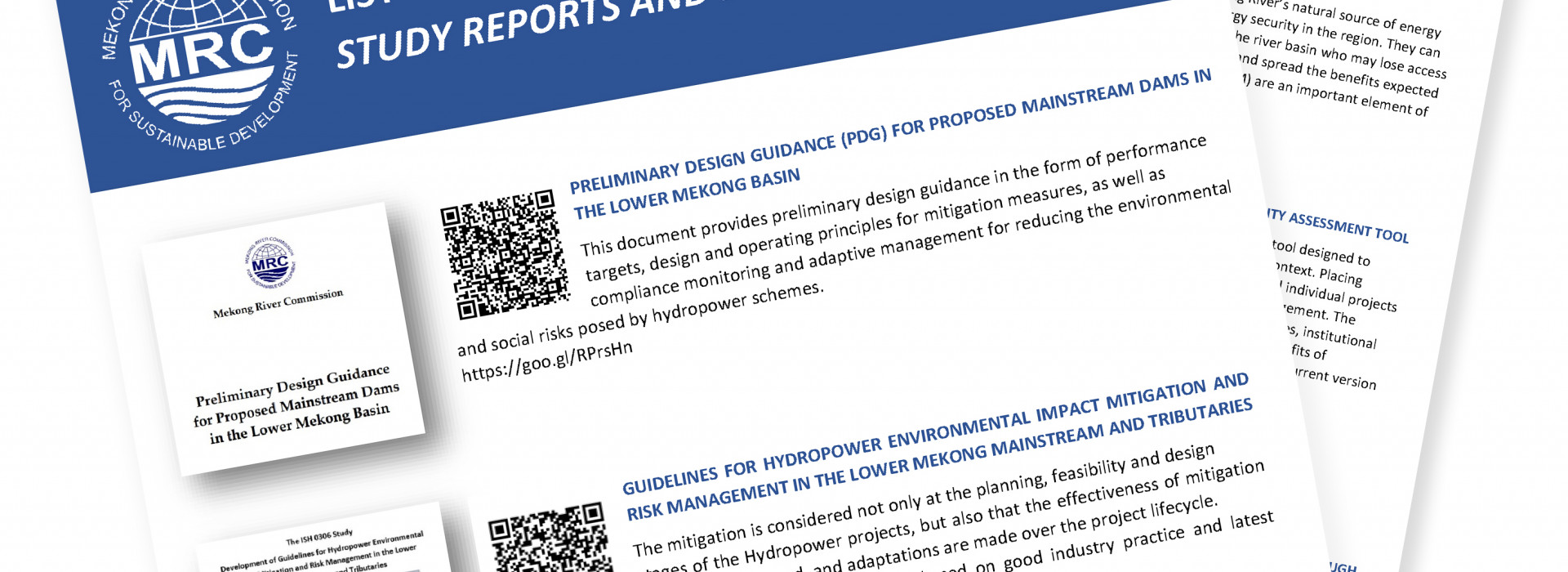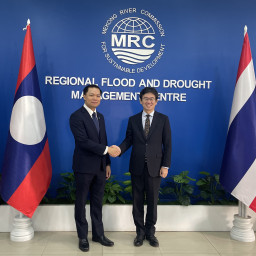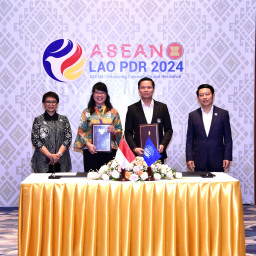Mekong River Commission’s key strategic documents to back Laos in updating hydropower strategy and plan
Vientiane, Lao PDR, 27 August 2018 – The Mekong River Commission Secretariat has outlined several key strategic and technical documents to back Lao PDR in updating its hydropower strategy and plan.
The list was prepared in response to the recent announcement by the Prime Minister of Lao PDR that his country would review all existing and underway dams, suspend the consideration of all new hydropower investments and update its hydropower strategy and plan, in which the MRC had welcomed.
“We’re confident these ready-to-use products will contribute extensively to the efforts by the Lao government since they were produced jointly by the four Mekong member states, using regional and national perspectives,” MRC CEO Pham Tuan Phan said. “Our technical team of experts is ready to provide services to the government.”
These documents – all available publicly – cover guidelines on hydropower related design and consideration, benefit sharing mechanisms, fish friendly passages and an assessment tool.
In the first category, there are three documents. The first one – preliminary design guidance (PDG) for proposed mainstream dams in the lower Mekong basin – provides initial design guidance in the form of performance targets, design and operating principles for mitigation measures, as well as compliance monitoring and adaptive management for reducing the environmental and social risks posed by hydropower schemes. The PDG is being updated, but even so, its current draft is also suitable for consideration. The second document – guidelines for hydropower environmental impact mitigation and risk management in the lower Mekong mainstream and tributaries – offers a well-rounded consideration around planning, feasibility and design stages of hydropower projects and their mitigation and adaptation as well as coordination options against risks.
The guidelines for the evaluation of hydropower and multipurpose project portfolios is the last one in the category. It aims to provide a fuller picture of the wider social, economic and environmental implications around hydropower projects, and maximize dams for multiple uses. It also looks at the integration of all cost and benefit into the national strategic planning approach.
Guidance on national-to-local benefits sharing options for hydropower on Mekong tributaries is also included in the second category. This document examines different benefit sharing mechanisms and considers them as an important element of planning of hydropower project to make up the losses and spread benefits expected from hydropower development, first, within the countries, and possibly, across countries.
The third category is an assessment tool – RSAT: rapid basin-wide hydropower sustainability assessment tool. The RSAT is a multi-stakeholder dialogue and assessment tool designed to consider hydropower sustainability issues in a river basin context, such as major tributary basins of the Mekong including the Sekong. It has the potential to help identify development strategies, institutional responses and management measures that can be deployed to optimize the benefits of hydropower development and reduce risks.
Three documents are in the last category. The first one is fish passage: review of existing research on fish passage through large dams and its applicability to Mekong mainstream dams. This paper summarizes current knowledge and research on fish-pass solutions for both upstream and downstream migration, with a focus on how lessons learned from around the world can be applied to the Mekong context. It provides guidance and highlights knowledge gaps to contribute to the development of effective mitigation measures for large dams on the Mekong.
The second document is fish compatible turbine: review of existing knowledge on the effectiveness and economics of fish-friendly turbines. It reviews existing knowledge on the effectiveness and economic of fish-friendly turbines (FFT) being used globally. It also provides current information on fish-friendly turbine technologies, ways that different turbines influence fish injury and survival, economic trade-offs for different types and scales of turbines, and applicability of FFT technologies and trade-offs at hydropower projects on the mainstream of the lower Mekong River.
The last document in the category is pilot testing in the Sre Pok sub-basin on the identification of ecologically sensitive sub-basins for sustainable development of hydropower on tributaries. The paper aims at supporting sustainable hydropower in the lower Mekong basin. While enabling hydropower development, it also ensures the protection of identified Ecologically Sensitive Areas (ESAs) and their environmental quality and the guaranteeing of the overall socio‐economic benefit.
Along this list are two other considerably important documents.
The MRC’s latest technical guidelines for transboundary environmental impact assessment in the lower Mekong basin, which is pending a formal approval by the governance body of the MRC, is of great assistance to the subject review and update. The guidelines aim to promote good cooperation for preventing, minimizing, mitigating and managing of transboundary environmental impacts of projects/activities on Mekong mainstream pursuant to Article 5 of the 1995 Mekong Agreement.
The $4.7 million study on the Sustainable Development and Management of the Mekong River Basin, including the Impacts of Mainstream Hydropower Projects, known as “Council Study” is also of great importance to the benefit of this work by the Lao government. While the Council Study points out positive benefits of hydropower projects, such as an increase in economic benefits, navigation opportunities, flood protection and drought management, and a more-dry season flow for irrigation expansion, these development projects also bring along negative impacts, including food security issues, fish stock depletion, reduction in sediment and nutrient transport downstream, etc.
The Study recommends a cross-sector benefit-sharing mechanism in which benefits from water development projects would be shared with other sectors that suffer adverse impacts from the projects.
The eight strategic documents can be viewed here and the Council Study report is here.
-END-





